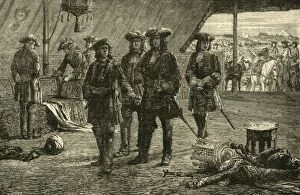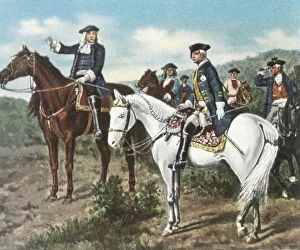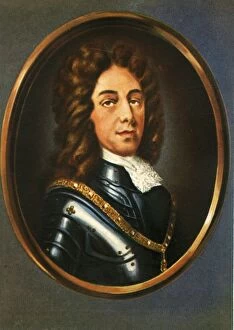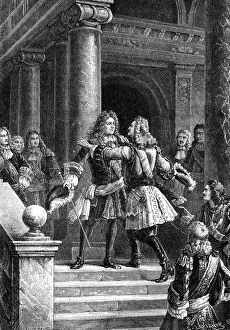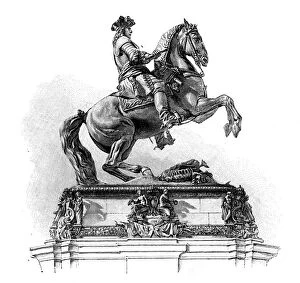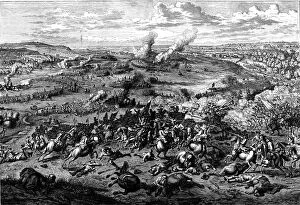Francois Eugene De Collection
Francois Eugene de, also known as Prince Eugene of Savoy, was a prominent figure in European history during the late 17th and early 18th centuries
All Professionally Made to Order for Quick Shipping
Francois Eugene de, also known as Prince Eugene of Savoy, was a prominent figure in European history during the late 17th and early 18th centuries. Born in 1663, he rose to fame as a skilled military commander and diplomat. One of his most notable achievements was the victory over the Turks at Belgrade in 1717. This triumph solidified his reputation as a formidable leader and strategist. A painting from 1890 depicts this momentous event, showcasing Prince Eugene's valor on the battlefield. In addition to his military prowess, Prince Eugene had strong political connections. An intriguing portrait from 1734 captures him alongside Crown Prince Frederick, highlighting their close relationship and shared ambitions. Prince Eugene's legacy extended beyond Austria; he became an influential figure across Europe. A photograph from 1933 showcases him as Eugen Prinz Von Savoyen, emphasizing his noble lineage and esteemed status. Belvedere Palace in Vienna stands today as a testament to Prince Eugene's grandeur. Built under his patronage during the early 18th century, it remains an architectural marvel that reflects his refined taste. Throughout history, artists have been captivated by Prince Eugene's remarkable life story. Paintings such as "Prince Eugene of Savoy" (1906) depict him with regal poise and dignity befitting his stature. His encounters with other renowned figures are also immortalized through art. The meeting between Marshal Villars and Prince Eugene in Rastadt is depicted in a painting from 1898 by none other than Marshal Villars himself—an extraordinary glimpse into their historic encounter. Even royalty recognized Prince Eugene's exceptional abilities; Queen Anne received him with great honor during one of his visits to England. Their meeting symbolizes the respect he commanded among monarchs throughout Europe. The Battle of Blenheim on August 13th, 1704 marked another significant milestone for Prince Eugene—a decisive victory that changed the course of European history.


